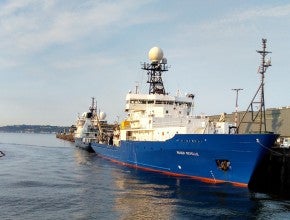The National Aeronautics and Space Administration (NASA) in collaboration with the National Science Foundation is supporting the EXport Processes in the Ocean from RemoTe Sensing (EXPORTS) field campaign that links upper ocean net primary production (NPP) and surface ocean properties determined from satellite observations with organic matter in the ocean’s twilight zone. Excitingly, together with Tatiana Rynearson, we are one of 11 projects that were selected by NASA to participate. We are investigating how predation in the surface ocean by herbivorous protists alters the abundance and size spectra of particles and plankton, and thus, ultimately the matter available for EXPORT. Moreover, lead by post-doctoral fellow Heather McNair, we are exploring herbivory rates in the mesopelagic and take opportunities to collaborate with other EXPORTS researchers to investigate predation involving marine snow (Passow, UCSB) and vertically migrating mesozooplankton (Maas (BIOS) and Steinberg (VIMS)).
This research identifies linkages among predator mediated carbon flows, environmental drivers and export production, which are crucial for developing the diagnostic and prognostic relationships necessary for a predictive modeling framework of biologically mediated carbon flows in the global ocean.

